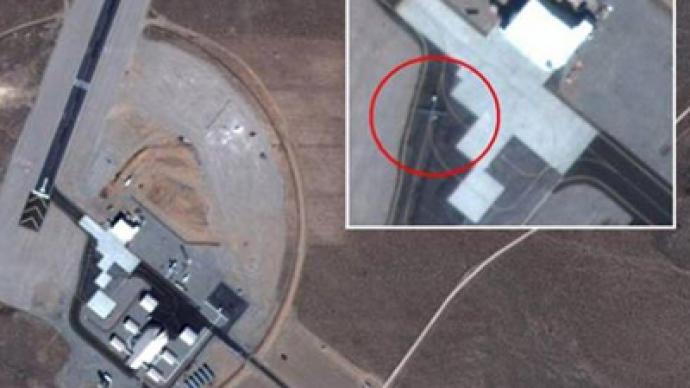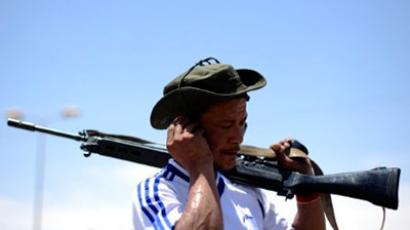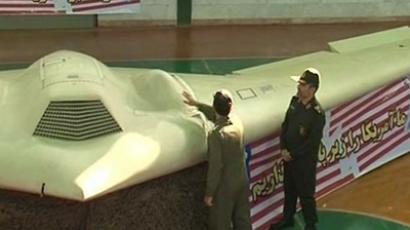Google unEarths image of secret US drone base in Nevada

Google Earth has published images of a secret US airfield in Nevada. The images indicate that the base is used to test and maintain unmanned drones. And now, the publication is fueling a debate about whether Google is compromising US security.
Aviation website Flight Global found the Yucca Lake airfield image on Google Earth. The images allowed Flight Global to write a detailed description of site, claiming a 5,200 foot (1,580 meter) asphalt runway, with MQ-1 Predator or MQ-9 Reaper Unmanned Aerial Vehicle (UAV) – also known as drones – being towed on the parking ramp. The image also shows four hangars, a parking lot and a security perimeter. Tim Brown, an imagery analyst with Globalsecurity.org, said that the hangars could accommodate up to 10-15 MQ-9 Reaper aircraft. Flight Global estimates that the base can accommodate approximately 80 employees plus some specialized drone maintenance facilities. One piece of evidence suggests that the airfield is used to test the new RQ-170 Sentinel, a drone nicknamed the "Beast of Kandahar": a special clamshell hangar, used specifically to lodge the “Beasts,” can be seen at Yucca Lake. The RQ-170 Sentinel is one of the most sophisticated drones in the American arsenal. It features high-definition cameras, sensors that can scan for nuclear armaments, and an advanced stealth shell to hide it from radar detection. The Iranian government claims it recently captured an RQ-170 Sentinel it alleges was being used by the United States to spy on Iranian nuclear activities. Earlier images of the airfield showed other aircraft on the site – the Pilatus PC-12 and the Beechcraft King Air, both manufactured by Lockheed Martin. Lockheed Martin also manufactures some of the most advanced drones for the US military – the Polecat technology demonstrator and the RQ-170 Sentinel – which were tested at airfields on the same range. It is not yet clear which US government agency uses the Yucca Lake airfield. The airfield is located on the heavily restricted Tonopah Test Range, which makes use of land formally belonging to the National Nuclear Security Administration, a division of the US Department of Energy. The airfield’s isolation from other sites on the range has prompted speculation that it may be a secret CIA testing spot for hardware and software for its own drone program. The Department of Energy also frequently leases its facilities to the Department of Defense and the Department of Homeland Security. According to archive images, the Yucca airfield was constructed around 2002. Two reports by the Department of Energy indicate that the base operates 4-6 UAV flights and 2-3 manned flights, over the dry Yucca lakebed at altitudes under 12,000 feet (3,650 meters), every day. Google has already been the subject of controversy for publishing air base images. In 2009, images of the Shamsi airbase in Pakistan (taken in 2006) showed the presence of Predator drones, although the Pakistani government had previously said that the US did not base its drone operations in the country.
Journalist Russ Baker believes a national and international conversation must be had about the importance of privacy and national security.“Google’s function is to send satellites around the world – to map the world for us – and that’s what they're doing,” he noted.But with so many secret locations across the US and around the globe, Google simply has no way of knowing about all of them. “They have to tell Google all their secret facilities first, and then ask them to go to great measures to secure them,” Baker told RT.“We see more and more conflict because governments … want to be able to essentially pry into everyone’s lives, and have no one prying into what they are doing."














